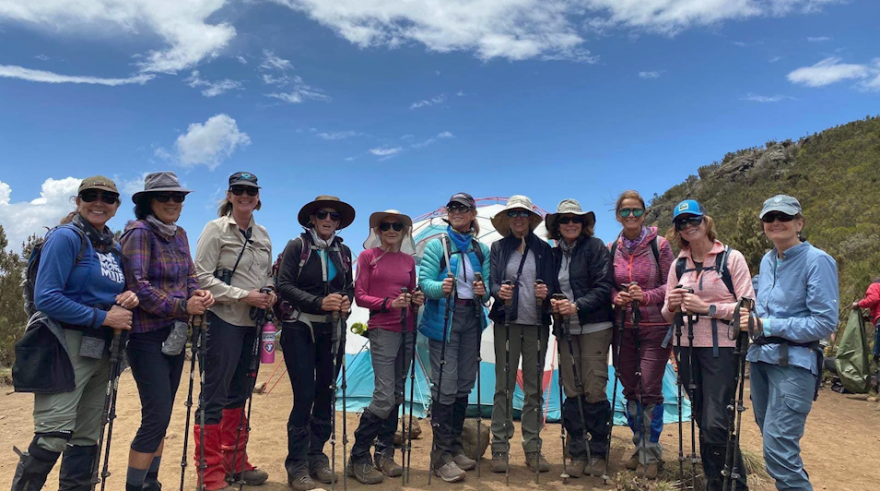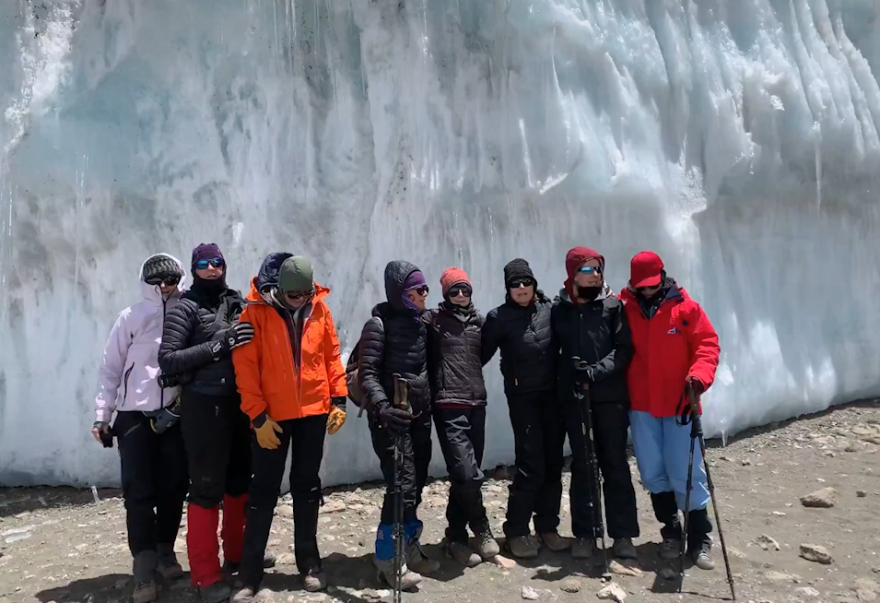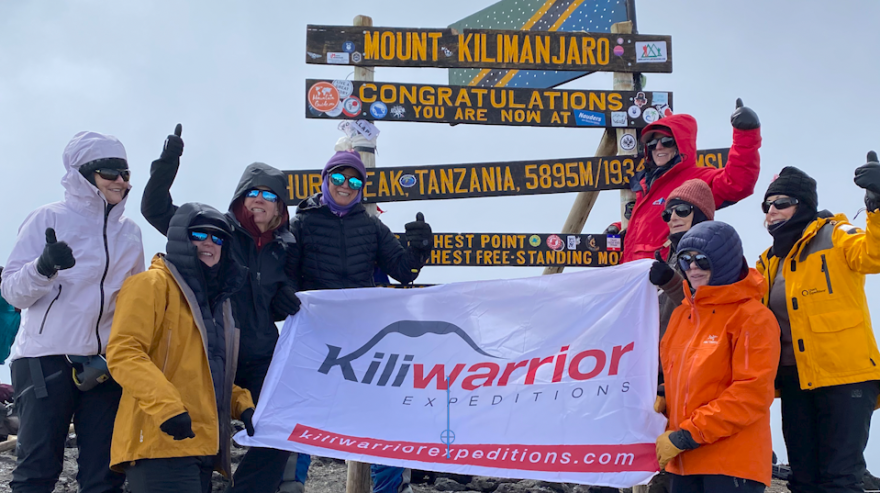Julie Boorman has been a mammographer for more than 35 years. While it's a job she adores, she knows most women above a certain age have an uncomfortable familiarity with the mammography machine. But, time and again, she’s seen it save lives.
“I know I'm doing something important,” Boorman said.
And it’s the uncertainty of life that inspired her to set off on her own goals, zeroing in on a particularly lofty one.
“The bucket list item was ready to be checked off,” she said.
The idea came about during the COVID-19 pandemic, when connecting with others was difficult. Hiking was one of the few joys Boorman and her friends could share. Together, 11 of them made a pact to climb Africa’s highest peak, Mount Kilimanjaro in Tanzania.
As if that wasn’t enough of a challenge, all of the women ranged in age between 58 and 66 years old.
Anita Mahaffey said climbing Kilimanjaro had always been on her bucket list, and was astonished to learn her friends shared the same goal.

“I decided I had to do it before I got too old. We did it. And every single one of them, once they signed up, they did not back down,” she said.
The group called themselves the "Kiliqueens" and they enlisted Kiliwarrior, a Canadian climbing outfitter, to guide their trek. In preparation, they spent months building up their strength and endurance by taking smaller, but progressively challenging hikes, including San Diego’s six peak challenge. And then in February 2023, the group set out for Tanzania.
“One of the guides said, ’You should be in the Guinness Book of World Records,’” Mahaffey said. ”And I think part of it was because I only have one eye. So climbing Kilimanjaro is challenging, but with one eye, it was even more challenging because you don't have the depth perception. Everything kind of looks flat. But, you know what, they also said, ‘Dig deep, dig deep.’”
Mahaffey said it was six days of fun and three days of pure hell. They received critical support from the porters hired by their outfitter to guide their trek, as well as to carry 40 pounds of gear per person up the mountain.
Boorman said the climb was partly for friends and patients who fought breast cancer. “We did these things for them, too,” she said.
The group took a route called the Western Breech, scrambling over ice, steep terrain and rocks.
“It was the most difficult route of Kilimanjaro, but it was also the longest, so it gave us more time to acclimatize,” said Mahaffey.
Eventually, the group reached the slowly receding Furtwängler Glacier, which is expected to be completely melted by the year 2050. As the group continued the ascent, the porters kept track of their oxygen levels, testing their cognitive function with small tasks like tying their shoelaces.

“We knew we had to go slowly. And in Swahili there are three words that is repeated over and over and it's ’pole, pole, pole.’ go slowly,” Boorman said.
The slower pace is part of the success rate of summiting. Even so, none of them escaped the dreaded altitude sickness.
“The mountain decides. You don't decide. The mountain decides whether you're going to go up or not,” said Mahaffey.
And the mountain decided that three of the women should not ascend further.
“It wasn't their choice. It was the outfitter that said, ‘If you go up, you're going to die,’” said Mahaffey.
Eight of the women made it to the top, but all agree it was the journey to get there, and the ensuing bond that formed among the entire group, that mattered the most.
For Julie Boorman, who has spent her career protecting women against one of life’s uncontrollable variables, she said setting goals does not have to be summiting a mountain, but simply pushing yourself to meet desired challenges despite age, gender, or ability.
“Do it. Go for it. Be strong. Don't doubt yourself. You can do it. Don't wait. Now's the time,” she said.








